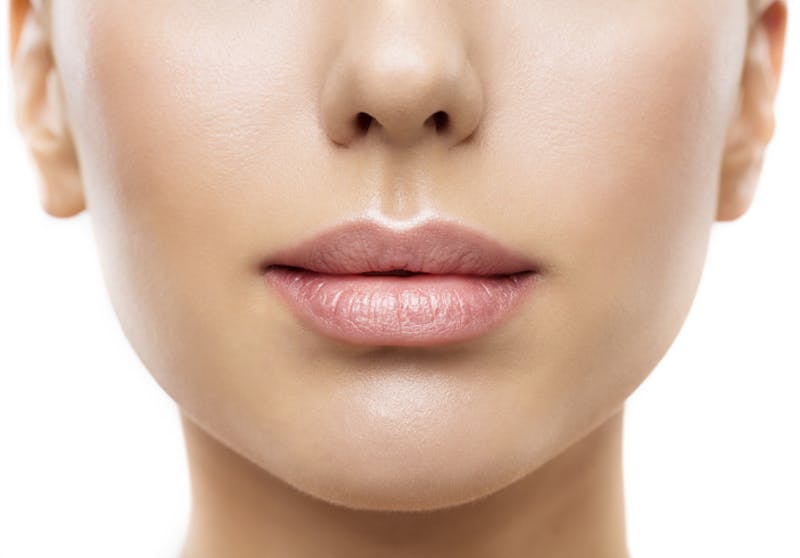

When you look in the mirror, do you want to see your more youthful reflection looking back at you? For this reason, as we age, people seek solutions to regain that more youthful appearance. Options range from non-surgical procedures, like injectable fillers, and surgical procedures, such as blepharoplasty, brow lifts, and facelifts. Most surgical procedures address skin laxity and excess by removing and tightening the skin, the old “Nip ‘n Tuck.” But not all changes in your face are related to the skin.
While an aging face has creases, lines, wrinkles, and sagging the more important realization is that the aging face is losing volume. And this affects all parts of the face. It explains the success of injectable fillers in preserving youth in younger patients. But it also highlights the failings of older facelift techniques that did not address the volume loss. We all have seen famous stars with too much skin removed and pulled too hard after a facelift – to make them almost unrecognizable!
We can now restore youthful volume to the face using your own fat, decreasing the need to nip and tuck so much. Today’s facelifts offer more potential for a naturally youthful appearance than ever before, solving many of the aesthetic problems you see in your reflection, even at the skin level. It is not an exaggeration to say that fat grafting has revolutionized facelifts.
Facial fat grafting, simply put, is a transfer of fat from one area of your body to your face. This transfer successfully refreshes the areas of your face that have lost volume, providing a natural supple appearance. And by combining facial fat grafting with a facelift, we can now deliver a natural-appearing result that will leave you looking like you, just younger, with your friends guessing why you look so good.
How Your Face Ages: The 3 Stages of Facial Aging
There are three stages of facial aging. Typically, in the second or third stage, people express interest in having a facelift.
Stage One
The first stage of facial aging involves visible changes to your skin’s surface. These changes include wrinkles, age spots, and broken blood vessels. Laser surfacing removes dead cells that cause age spots, smooths wrinkles, and reduces fine lines. Botox and filler can help eliminate many of the wrinkles. The facial volume is still good.
Stage Two
The second stage of facial aging involves loss of elasticity in your skin. You also notice sagging throughout your face, typically creating wrinkles that grow more defined over time. Professional physician-prescribed skincare, more aggressive lasers and peels, and regular Botox can have a significant impact. Volume is beginning to wane, and fillers are now more critical to attaining that youthful look. For surgical options at this stage, drooping of the brow may require a brow lift, excess eyelid skin, a blepharoplasty, and neck sagging a neck lift.
Stage Three
Loss of facial volume and thinning of the skin is the most significant change noticed in stage three of facial aging. This is when your face starts appearing hollowed or shrunken. Most patients will use the terms “tired,” “sad,” and “unhealthy” to describe their face, regardless of the amount of sleep, emotional state, or health. Most people start noticing these changes sometime after age 50, but factors such as genetics, smoking, and sun damage to the skin can accelerate the process. Non-surgical options and injectable fillers can no longer remedy the situation. This is when a facelift with fat grafting addresses all concerns and can effectively rejuvenate the face and provide long-lasting improvement.
What is Fat Grafting?
Also commonly called fat transfer and fat injection, fat grafting is a process of extracting fat from one area of your body, processing it for purity, and then delicately placing it where you have experienced lost volume. These areas typically included your temples, your eyebrow, your cheeks, your jawline, your lips, and your chin. Ultra-fine cannulas are used to place the fat to limit the trauma to your face and place small amounts at a time to increase their chance of survival.
The donor fat is typically sourced from your abdomen, thighs, buttocks, or other fat-rich parts of your body. Your fat cells are programmed to stay in these areas, while the fat cells in your face are programmed to atrophy or disappear over time. With fat grafting, you will immediately see improved facial volume previously lost to aging. The process has other benefits, too. It turns out that among the fat cells being grafted, stem cells elaborate hundreds of known growth factors that stimulate new collagen in the skin. This reduces lines and wrinkles and improves the overall texture and quality of the skin.
Fat Grafting with Facelifts
A recent study by Dr. Sammy Sinno and associates at New York University and reported by the American Society of Plastic Surgeons revealed that 85 percent of today’s plastic surgeons apply fat grafting in facelift surgeries. About 70 percent only started doing so in the past decade. This makes fat transfer relatively new in the area of plastic surgery. But in these 10 years, the results have proven revolutionary.
You can expect most of your transplanted fat to gain a new blood supply and survive. Some fat will not survive, and your body will naturally reabsorb these cells. In experienced hands, fat survival should be 70-80%. With inexperience comes less survival and lumps of dead fat that can form cysts and visible lumps. This is true with many new procedures, so make sure your surgeon has extensive experience and before & after photos of similar patients to back it up.
Will Fat Grafting Make My Face Look Fat?
Fat grafting will not make your face look fat after your facelift. This is a common concern. The reason is that the amount of fat is small and spreads over broad areas of the face. These thin discrete layers of fat cannot change much in volume with weight gain or weight loss. The look after fat grafting to the face is “soft,” “smooth,” “youthful,” and not “fat.” If you have concerns about what to expect from your results, talk to your plastic surgeon before the procedure. They can explain their process and show you where your fat transfer will provide improvements.
Schedule Your Facelift Consultation Today
Zenn Plastic Surgery provides facelifts with fat grafting. Dr. Zenn has decades of experience in performing facelifts. He was also early among his peers in using fat transfer for facial contouring and feature refinement. He uses the combined procedures to add volume and enhance your facial contours where aging has affected unwanted changes.
It is important to remember that no two facial plastic surgeries are exactly alike. In your initial consultation, Dr. Zenn will use his experience and skill as an American Board of Plastic Surgery board-certified plastic surgeon to advise where and how he can improve your appearance.
Schedule your consultation with Zenn Plastic Surgery today to learn more about your options for facial rejuvenation through a facelift with fat grafting. You deserve to feel confident in your skin, with your face showing your natural vibrancy and timelessness. And nobody else needs to know why. Call (919) 480-3885 for scheduling.

